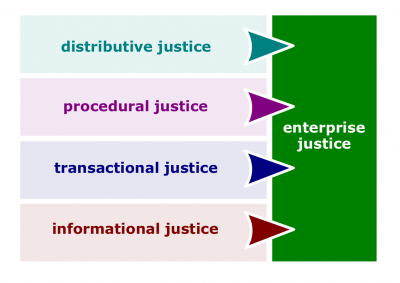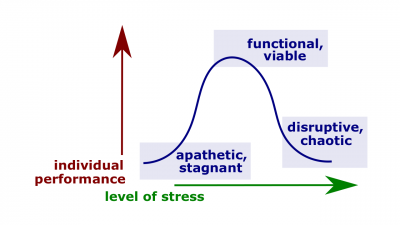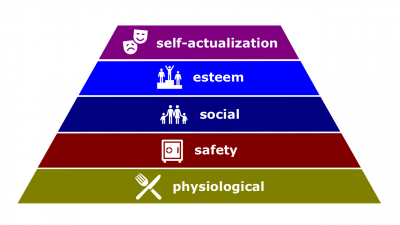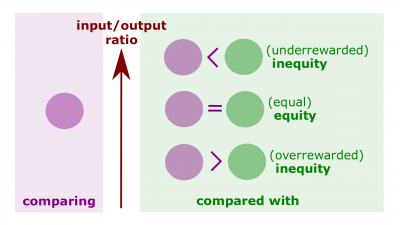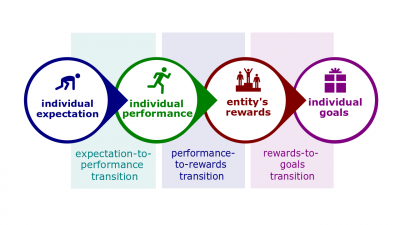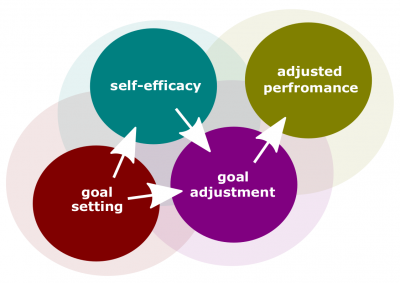Human Motivations Quarter
Human Motivations Quarter (hereinafter, the Quarter) is a lecture introducing the learners to individuals research primarily through key topics related to motivation. The Quarter is the second of four lectures of Individuals Quadrivium, which is the fourth of seven modules of Septem Artes Administrativi (hereinafter, the Course). The Course is designed to introduce the learners to general concepts in business administration, management, and organizational behavior.
Contents
Outline
Human Perceptions Quarter is the predecessor lecture. In the enterprise research series, the previous lecture is Monitoring Quarter.
Concepts
- Psychological drive. An innate, biologically determined urge to attain a goal or satisfy a need.
- Drive doctrine. A theory that attempts to define, analyze, or classify the psychological drives. This doctrine is based on the principle that organisms have certain psychological needs and that a negative state of tension is created when these needs are not satisfied. When a need is satisfied, drive is reduced and the organism returns to a state of homeostasis and relaxation. According to the theory, psychological drive tends to increase over time and operates on a feedback control system, much like a thermostat.
- Motivation. Enterprise efforts that account for an individual's intensity, direction, and persistence of effort toward attaining a goal.
- Demotivation. Enterprise efforts by which a person's efforts toward attaining a goal are weakened, distracted, and declined.
- Motivation component. A part or element of someone's motivation.
- Motivated direction. The course along which someone moves because of his or her motivation.
- Motivated energy. The strength, vitality, and intensity required for sustained physical or mental activity arrived from someone's motivation.
- Motivated persistence. Firm or obstinate continuance in a course of action caused by someone's motivation in spite of difficulty or opposition.
- Drive factor. A factor that accounts for an individual's psychological drive.
- Motivator. A drive factor that increase job satisfaction and motivation.
- Demotivator (or a motivation killer). A drive factor that decrease job satisfaction and motivation.
- Hygiene factor. A drive factor that eliminates job dissatisfaction, but don't motivate. Hygiene factors such as organizational policy and administration, supervision, and salary placate workers when adequate in a job. Employees are not dissatisfied when these factors are suitable.
- Psychological stress. In psychology, a feeling of strain and pressure. This feeling emerges as a response to one or more stressors or a lack of those. The reaction can possibly be pleasant, but the term, psychological stress, is usually used to describe unpleasant ones because constant and unpleasant reactions can cause serious health conditions. Some researches argue that human beings need some level of psychological stress in order to function normally.
- Stress administration. Practice and a set of concepts, based on that practice, that define culture of coping or dealing effectively with psychological stress.
- Need. (1) Something that is wanted or required; (2) Circumstances in which something is necessary, or that require some course of action.
- Change risk. A risk, positive and/or negative, of some change.
- Stressor. A factor that causes stress. The factors may include demands, constraints, or opportunities.
- Challenge stressor. A stressor associated with workload, pressure to complete tasks, and time urgency.
- Hindrance stressor. A stressor that keep you from reaching your goals (for example, red tape, office politics, confusion over job responsibilities).
- Factor. A circumstance, fact, or influence that contributes to a result.
- Intrinsic factor. A factor originated intrinsically or, in other words, belonging naturally; a factor coming or operating from inside.
- Extrinsic factor. A factor originated extrinsically or, in other words, is not part of the essential nature of someone or something; a factor coming or operating from outside.
- Physiological stressor. A stressor such as physiological need, want, or risk related to physiological factors.
- Physiological need. A person's need for basic food, drink, shelter, and other physical needs.
- Physiological want. A person's want for special food, drink, shelter, sexual satisfaction, and other physical wants.
- Safety stressor. A stressor such as safety need, want, or risk related to safety factors.
- Safety need. A person's need for basic security and protection from physical and emotional harm.
- Safety want. A person's want for special security and protection from physical and emotional harm.
- Social stressor. A stressor such as social need, want, or risk related to social factors.
- Social need. A person's need for basic affection, belongingness, affiliation, acceptance, and friendship.
- Need for affiliation. The desire for friendly and close interpersonal relationships.
- Social want. A person's want for special affection, belongingness, acceptance, and friendship.
- Esteem stressor. A stressor such as esteem need, esteem want, or risk related to esteem, respect, and dignity factors.
- Esteem need. A person's need for internal factors such as self-esteem, respect, and dignity, as well as external factors such as status, recognition, and attention.
- Esteem want. A person's want for special internal factors such as self-esteem, respect, and dignity, and external factors such as status, recognition, and attention.
- Terminal stressor. A stressor such as self-actualization need including need for power, need for achievement, and need for cognition, self-actualization want, or risk related to terminal factors.
- Self-actualization need. A person's need to become what she or he is capable of becoming.
- Need for power. The need to make others behave in a way in which they would not have behaved otherwise.
- Need for achievement. The drive to succeed and excel in relation to a set of standards.
- Need for cognition. A personality trait of individuals depicting the ongoing desire to think and learn.
- Self-actualization want. A person's want to become what she or he is capable of becoming.
- Early theories of needs. A group of early theories of motivation that suggested that some particular needs drive human behavior.
- Two-factor theory (also known as motivation-hygiene theory). The motivation theory that relates intrinsic factors to job satisfaction and associates extrinsic factors with dissatisfaction.
- Hierarchy of needs is a classification of needs originally proposed by Abraham Maslow for his hierarchy of needs theory, which was one of early theories of motivation that suggested that human needs form a sort of hierarchy in which, as each need is substantially satisfied, the next level becomes dominant.
- McClelland's theory of needs (or three-needs theory). Proposed by McClelland, this theory suggests that three acquired (not innate) needs -- achievement, power, and affiliation -- are major motives in work.
- Extrinsic motivation. Motivation caused by extrinsic factors.
- Operant conditioning. A theory of learning that says behavior is a function of its consequences.
- Theory X. The assumption that employees dislike work, are lazy, avoid responsibility, and must be coerced to perform.
- Reinforcement theory. A theory that suggests that behavior is a function of its consequences.
- Reinforcer. A consequence immediately following a behavior, which increases the probability that the behavior will be repeated.
- Intrinsic motivation. Motivation caused by intrinsic factors.
- Theory Y. The assumption that employees are creative, enjoy work, seek responsibility, and can exercise self-direction.
- Equity theory. The theory that an employee compares her or his job's input-outcomes ratio with that of relevant others and then corrects any inequity.
- Expectancy theory. The theory that suggests that an individual tends to act in a certain way based on the expectation that the act will be followed by a given outcome and on the attractiveness to the individual. The path-goal model has been developed based on that theory.
- Self-efficacy theory. A theory that suggests that an individual's self-efficacy is based on one or more self-efficacy sources.
- Tailored motivation. Motivation caused by a combination of intrinsic and extrinsic factors.
- Goal-setting theory. The proposition that suggests that specific goals increase performance and that difficult goals, when accepted, result in higher performance than do easy goals.
- Self-determination theory. A theory of motivation that is concerned with the beneficial effects of extrinsic motivation.
- Cognitive evaluation theory. A version of self-determination theory that holds that allocating extrinsic rewards for behavior intristically rewarding tends to decrease the overall level of motivation if the rewards are seen as controlling.
- Stakeholder analysis. The work to identify the stakeholders who may be impacted by a proposed initiative and assess their interests and likely participation.
- Stakeholder power. The power that a stakeholder has over an enterprise effort. Usually, this power is rated as high, medium, or low.
- Stakeholder support. The degree to which a stakeholder supports an enterprise effort. Usually, this support is rated as positive, neutral, or negative.
- Stakeholder influence. The degree to which a stakeholder influences an enterprise effort. Usually, this influence is rated as high or low.
- Stakeholder need. The degree to which a stakeholder is interested in outcomes of an enterprise effort. Usually, this need is rated as strong, medium, or weak.
- Stakeholder readiness. The degree to which a stakeholder is ready to getting outcomes from an enterprise effort.
Roles
- Stakeholder role.
- Unaware stakeholder. A stakeholder who is unaware of an enterprise effort; he or she has no information about this development.
- Resistant stakeholder. A stakeholder who is resistant to an enterprise effort; he or she is aware of this development and resistant to the changes and impacts the enterprise effort may bring.
- Neutral stakeholder. A stakeholder who is neutral to an enterprise effort; he or she is aware of this development and neither supportive nor resistant to the changes and impacts the enterprise effort may bring.
- Supportive stakeholder. A stakeholder who is supportive to an enterprise effort; he or she is aware of this development, as well as its potential changes and impacts, and supports them.
- Leading stakeholder. A stakeholder who is leading an enterprise effort; he or she is aware of this development and actively engaged to ensure its success.
- Stakeholder behavior.
Methods
Instruments
- Personality-motivation model. A technique that suggests evaluation of each of three components of motivation such as direction, energy, and persistence based on someone's personality.
Practices
- Since no single theory of motivation exists, different concepts may be useful in different situations. In general, extrinsic motivation can be more useful for new employees, while intrinsic one can work better for mature workers performing non-critical tasks. By its definition, tailored motivation sounds like the most expensive and/or time consuming, but it can be paid off when applied to the most critical human resources.
Individual Decisions Quarter is the successor lecture. In the enterprise research series, the next lecture is Social Rationale Quarter.
